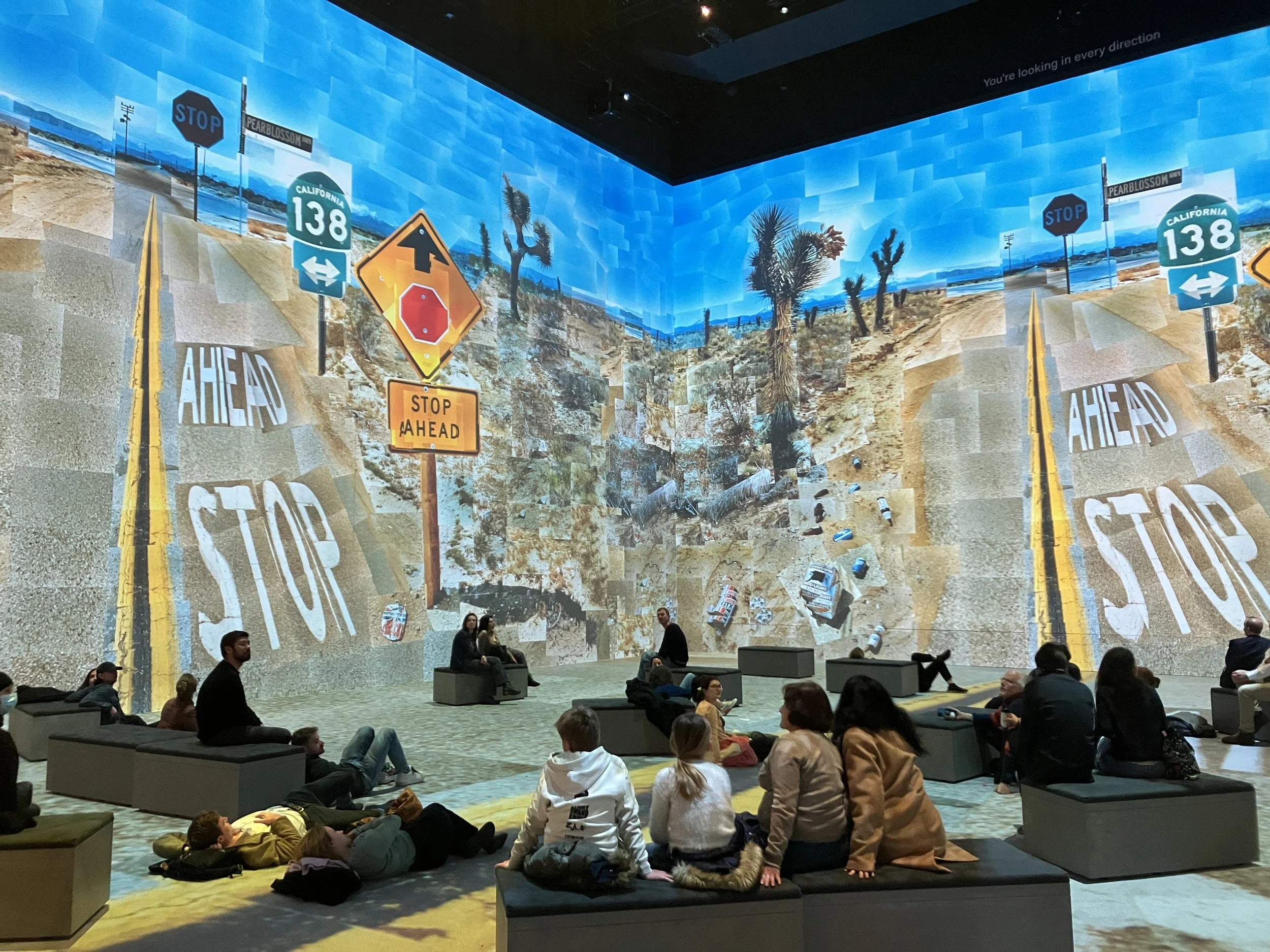Immersive Opportunities: Hockney at the Lightroom
I am sceptical about immersive art experiences. Many of the big ‘blockbuster’ ones currently being advertised in London seem incredibly expensive, and I’m not sure why you’d spend that money over seeing real artworks by the same artist in one of our museums. I therefore had mixed feelings on hearing about the new Lightroom space opening in Kings Cross for ‘artist-led shows’ with an emphasis on an immersive, digital offer. As it was designed as a sister venue to the Bridge Theatre, however, of which I am a big fan, I thought it would be worth trying.
My visit to the opening show produced with David Hockney, Bigger & Closer (not Smaller & Further Away), was therefore not only a pleasant surprise, it was revelatory. The Lightroom is the enjoyable visitor experience you’d expect from The Bridge, with a well-designed foyer area, nice bar and very nice visitor loos. The theatre space itself opens up impressively from rather industrial corridor access, to a two-tier space, with full projection across all four walls and the floor. A range of seating options allow visitors to view the show as they choose and, on my visit at least, it was not over-crowded.
Hockney’s show is somewhere between an immersive way into existing artworks, a documentary using extensive archival materials, and a new artwork in its own right. 50 minutes long and divided into six sections, you are introduced to different areas of Hockney’s practice over his long career: from stage sets, to his varied use of camera technology and interest in perspective, to a recurring fascination with paths and pools. The experience is entirely voiced by Hockney, much of it from archival sources, so a pleasing side experience is hearing his voice change from a young to old man.
The sections do give you an awe-inspiring immersive view into his works, particularly through animating his stage sets, and some of his more recent iPad paintings. But there is also clever use of projection and animation to show the production and development of his polaroid works, for example; or to put you in Hockney’s car experiencing a drive through the San Gabriel Mountains near Los Angeles accompanied by Wagner, which led to a photographic piece.
Similarly, with Hockney’s explanation, you are taken through aspects of vanishing-point perspective to understand the history of this in Western art, his fascination with it, and how he has engaged with and questioned perspective in his work. One particularly enjoyable moment sees a Chinese landscape scroll unroll around the entire room as Hockney explains the different approach to seeing a landscape in traditional Chinese art.
Ultimately, what this show does is to leave you seeing Hockney’s work differently, and with a greater appreciation of his skill and thoughtfulness as an artist – arguably what all good exhibitions should achieve. Although the show runs on a loop, I felt experiencing it in any order would build a narrative for the viewer that gave you a way into different areas of his oeuvre through also understanding other aspects. I understood the works that opened my experience of the show differently when they reappeared on loop than I had at the start, and was sorely tempted to watch the whole 50 minutes again.
I often feel that Hockney is an artist who is now over-exposed, with too many shows of recent work that is just not very good. But this show reminds you what exceptional work he has done in the past (as did the Fitzwilliam show last year). Arguably, the Lightroom approach is particularly suited to Hockney, as his work actively engages with technology and ways of seeing. The immersive and projected approach plays with core aspects of his work and is particularly successful with some of his digital experiments, such as the iPad paintings and 9-camera video journeys along Yorkshire roads.
This level of collaboration with the artist, and nuanced intelligent engagement with both the meaning and visuals of Hockney’s work bodes very well for future shows at the Lightroom, for which I now have high hopes.












